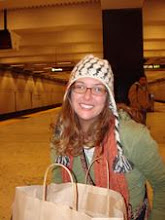One week in country and I find myself conflicted between the social aspects of the expatriate community and my assimilation into PNG culture. All around me are beautiful flowers, palm trees stretching towards the sea, and banana and coconut trees. Canoes filled with Papua New Guineans continuously pass by.

From which island are they coming? Are they going to the market to sell the bananas that crowd their canoe? I long to join them, to enter their village lifestyle connected with nature rather than the hustle of buses and crowded streets. It’s important for me to accept that I am in an urban placement along with countless international volunteers and aid workers. I must find a balance between the expat community here and my ideals of what I want my experience to include. I do not want to be another VSO volunteer that cuts line at the bank because of the whiteness of their skin. I do not want to be an expat that sits on the bank of a resort in a plastic lounge chair. I may not get to ride along in a canoe with “my village family.” I will however get to work with the Provincial Department of Education and other ngos at a higher level of capacity building. The “real PNG experience” will come as I travel to work with rural schools. I will be able to learn a lot from the others who are here working in development and research. I will gain a cultural exchange not only within PNG but also among all the other international volunteers. This may not be the rural, grassroots experience that I have grown to love but it is an experience nonetheless. If I want to pursue a lifetime’s work in development experience is what I need.
My heart keeps pulling me to Africa. Africa has this indescribable spirit about it. Everyone I have spoken to recently seems to say that PNG lacks the spirit of Africa. I cannot say because it’s all too new for me to decide. So far I am consumed by the beauty of Madang. As I sit here beside the sea, I hear the peaceful songs of birds and the crash of waves onto the shore. I see palm filled islands in all directions. Through the clear water I can see small blue fish and yellow fish with black stripes. The splendor of Madang has helped me through this whirlwind of a week. I have met dozens of people and stakeholders, visited many schools and offices, stressed in town trying to purchase the necessities for my apartment (pots, towels, TP), and dealt with the manager of my apartment who is trying to complete a handful of repairs including a leak over my shower. There’s a hole in my bathroom ceiling and mud covers my shower and floor. To many this would cause a considerable amount of stress while trying to adapt to a new culture and recover from jet lag. I simply reflect on the adaptations I made in Zambia and feel incredibly at ease. In Zambia my floors were made of mud and a shower was a once a month treat! It’s my nature to see the beauty and find the positive in any given situation. I will get settled in. I will find my place, my friends, and my “family.” I will find fulfillment in my placement. I will find all of this with the majestic beauty of Madang as my backdrop. Now, I believe it is time to take a symbolic first swim in the sea to wash away my worries and be refreshed by the spirit of Papua New Guinea.




















